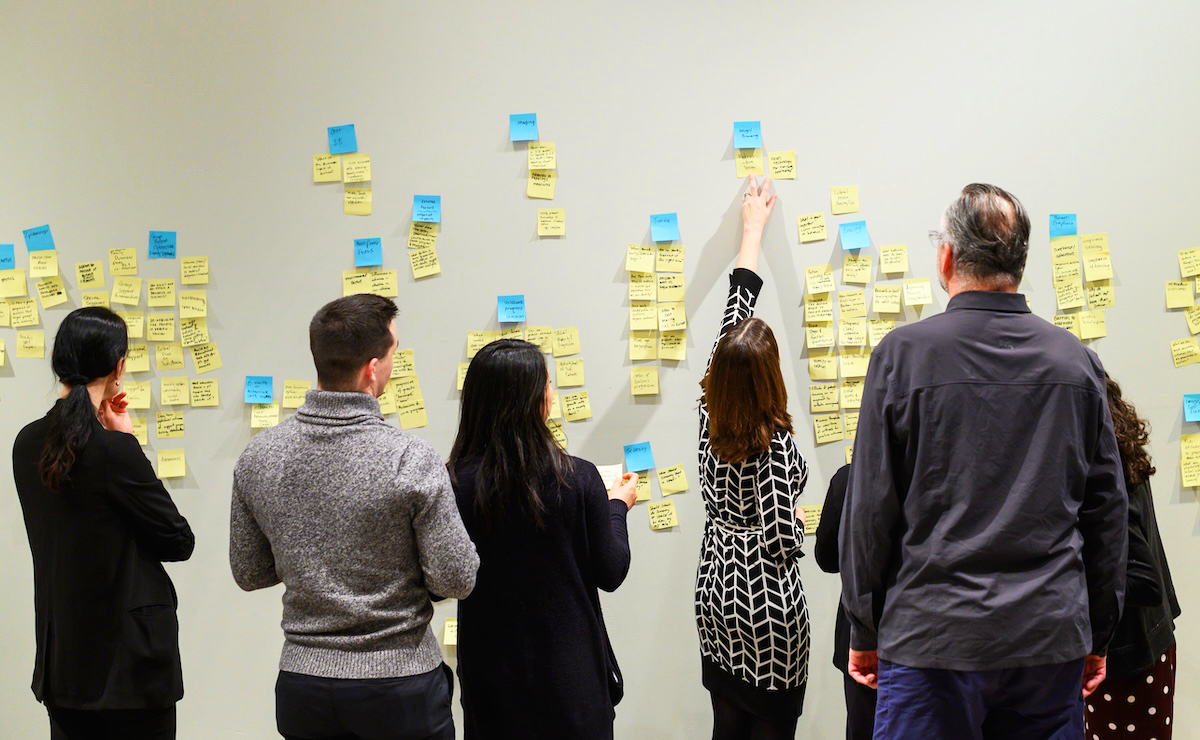Translating Ideas Into Impact With Team Science Support

Scientific collaboration has become critical to advancing translational research. In particular, collaborations that span disciplinary boundaries, known as team science, can lead to scientific breakthroughs and impact that would not have been possible with siloed research approaches. There is a need to enhance the effectiveness of team science by providing interventions, tools, and resources that enhance teamwork and foster research innovation.
The Michigan Institute for Clinical and Health Research (MICHR) is dedicated to advancing translational science, a field that aims to remove long-standing challenges in the translational process and speed research across a range of diseases and conditions. Removing roadblocks to team science is one way MICHR is helping to make research more efficient and impactful.
MICHR provides a variety of interventions to catalyze and advance research teams. Research jams, for example, are facilitated workshops that help participants develop a shared research vision and priorities, identify their value propositions and key activities, or develop a grant framework for a specific funding opportunity. These sessions have helped groups that are coming together for the first time, as well as established teams that want to explore new directions.
“The pressing health issues we’re facing today are incredibly complex; addressing them requires engaging people across disciplines, fields, and professions. But getting these cross-disciplinary research efforts off the ground, while also ensuring the individual needs and goals of the team members are met, can be challenging,” says Beth LaPensee, PhD, MICHR’s managing director of research strategy.

Linda Zhu, PhD, an associate professor of mechanical engineering at the University of Michigan-Flint, found that participating in a research jam opened her eyes to how many colleagues in different disciplines were interested in the same research questions she was.
“After the jam, I started contacting colleagues, and we’re now working on a project involving a fall risk analysis for older people using smartphones. It’s a collaboration with faculty members in computer science, psychology, and physical therapy,” she says.
Lindsey Mortenson, MD, MS, executive director of University Health & Counseling and chief mental health officer for Student Life, was glad to find MICHR’s offerings when she was looking to build and advance her research and applied analytics team. She was impressed by how her team’s data capabilities have grown since the COVID-19 pandemic and was eager to use that data in operations and to improve outcomes for students.
“We’re sitting on a mountain of data, but we need help taking the next steps to transform it into actionable operations and population insights,” says Mortenson. “We have lots of enthusiasm and talented staff, but I realized when it came to knowing what a really high-functioning research team looks like, we would benefit from outside guidance. And I’d seen an email about MICHR and knew they had resources around team science.”
For Mortenson and her team, the first step was a collaboration planning workshop, a facilitated session that results in a draft collaboration plan for the participating team.
“The intentionality was so valuable. The first step was thinking about the most important people to involve at this stage. That was something I hadn’t put a stake in the sand on before. Working with MICHR helped us take an amorphous thing and start to give it shape,” says Mortenson.
Building a team is just the beginning, according to LaPensee, who says, “Sustaining momentum while optimizing team functioning requires interventions that are different from those used to foster early-stage ideation. For MICHR, it’s about creating tailored and iterative plans of support for teams at all stages of development. It’s important that we balance creating space for creativity, innovation, and community building with identifying the concrete steps the team will take to advance the research agenda.”
Lindsay Kobayashi, associate professor of epidemiology and global public health, participated in a research jam that helped her team identify concrete steps that turned their ideas into something actionable.
“The research jam helped us formalize our ideas and then articulate them in terms of a research agenda we could follow. It gave us a nice structure,” says Kobayashi.

participants in a team science workshop create a visual representation of their brainstorming
Dee E. Fenner, MD, Bates Professor of Diseases of Women and Children and chair of obstetrics and gynecology, found participating in a research jam with her team broadened their thinking on what problems to tackle and how.
“A lot of OBGYN research is around obstetrics, which is very important but is really such a small part of a woman’s life. In the research jam, we were thinking bigger and broader,” says Fenner.
From ideas to execution, MICHR’s team science interventions are designed to help research teams each step of the way to meet their immediate and long-term goals. Mortenson had such a positive experience in the first workshop that she returned to MICHR for a systems mapping workshop, which helped build a shared understanding of the system and leverage points for change.
“We recently got some seed funding, and I feel like we’re spring-loaded now to make the strategic decisions that sometimes come up very quickly. Like, who will the first hires be? What are the roles that we really need that we don’t have on our team right now? The team exercise with MICHR made those answers much more obvious,” says Mortenson.

Team scientists at MICHR are also rigorously evaluating and refining inventions to ensure they produce the desired team and scientific outcomes.
“MICHR is building and testing team science interventions that bring value to the U-M research community and also contribute to the broader science of team science knowledge base. It’s exciting to see and be a part of that innovation and growth,” says Emily Somers, PhD, ScM, professor of rheumatology and obstetrics and gynecology and MICHR faculty lead for interdisciplinary research & team science.
Learn more about team science or request a consultation.